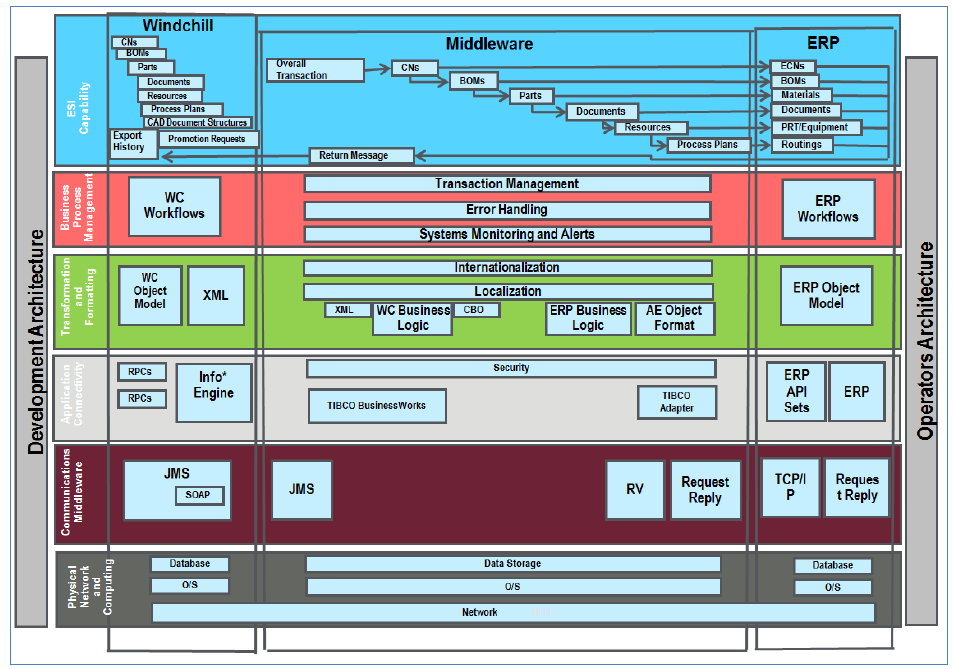Windchill ESI Customization—SAP
This section describes how to customize the out-of-the-box implementation of Windchill Enterprise Systems Integration (Windchill ESI). It is intended for developers who are familiar with Windchill, TIBCO and Windchill ESI.
This document provides high-level guidance to those considering customizing Windchill ESI. It is not intended to be prescriptive or extensive.
Customization should not be undertaken lightly. Customization can have a major impact on technical support, maintenance, and future upgrades. The costs and benefits of customization should be carefully analyzed with an experienced systems integrator prior to moving forward.
Also, you should discuss the Windchill ESI product roadmap with your PTC representative to determine if future product releases will include the desired functionality. Customizing Windchill ESI must be viewed from an end-to-end system perspective. Windchill ESI consists of many components organized in a layered architecture, as illustrated in the figure below. Customizations generally cannot be confined to a single component or module, due to the many interrelationships and dependencies between components. In other words, you should carefully consider the downstream effects of any modifications to the standard Windchill ESI product.

This section is composed of the following chapters:
• Customization Areas describes the detailed steps required to customize the three different areas (Windchill ESI services, EAI software components and Windchill).
• Windchill ESI Services Modules describes the java classes and Info*Engine tasks that implement Windchill ESI services.
• EAI Software Components Naming Standards describes the standards that have been followed in the EAI software components. It is strongly suggested to follow these standards when customizing the code.
• EAI Windchill Simulation module describes the utilities provided out-of-the-box with the EAI software components that allow users to simulate Windchill when testing the EAI software components by themselves.
• SAP Readiness Validation Process describes the utilities provided out-of-the-box with the EAI software components that helps users confirm that a given SAP distribution target system is correctly configured per documented assumptions and API characterizations.
• Windchill ESI Best Practices provides some guidelines to help minimize problems during customizations.
• Examples – Windchill to SAP provides two examples of end-to-end customizations that can be done in Windchill ESI.